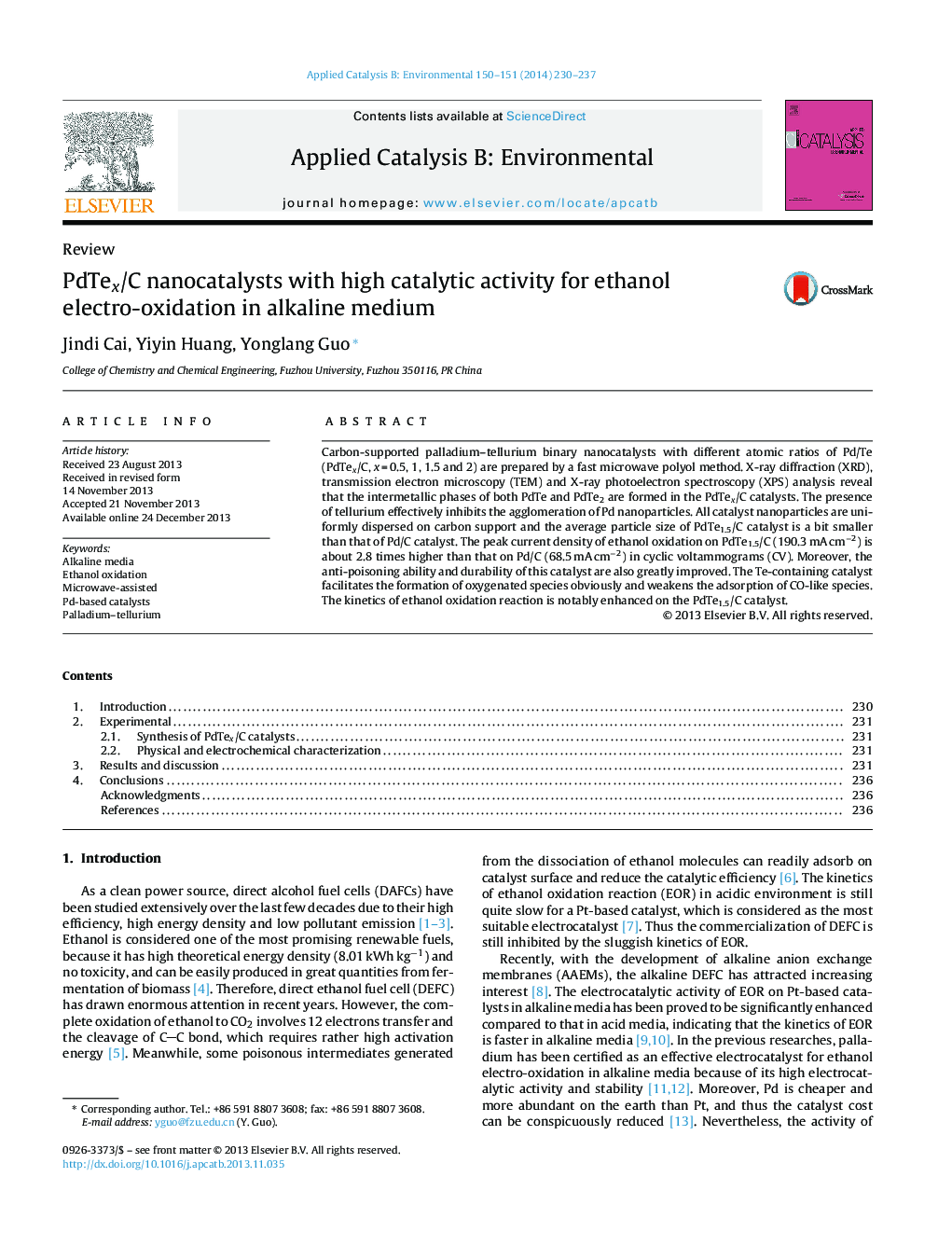| کد مقاله | کد نشریه | سال انتشار | مقاله انگلیسی | نسخه تمام متن |
|---|---|---|---|---|
| 45927 | 46427 | 2014 | 8 صفحه PDF | دانلود رایگان |

• PdTex/C catalysts were prepared by a fast microwave-polyol method.
• The ethanol oxidation current on PdTe1.5/C is 2.8 times higher than that on Pd/C.
• The addition of Te to Pd/C facilitates the formation of oxygenated species and improves the anti-poisoning ability greatly.
• The apparent activation energy of ethanol oxidation is reduced obviously by addition of Te to Pd/C.
• The promoted effect of Te in PdTex/C catalyst is attributed to the electronic effect and the bifunctional mechanism.
Carbon-supported palladium–tellurium binary nanocatalysts with different atomic ratios of Pd/Te (PdTex/C, x = 0.5, 1, 1.5 and 2) are prepared by a fast microwave polyol method. X-ray diffraction (XRD), transmission electron microscopy (TEM) and X-ray photoelectron spectroscopy (XPS) analysis reveal that the intermetallic phases of both PdTe and PdTe2 are formed in the PdTex/C catalysts. The presence of tellurium effectively inhibits the agglomeration of Pd nanoparticles. All catalyst nanoparticles are uniformly dispersed on carbon support and the average particle size of PdTe1.5/C catalyst is a bit smaller than that of Pd/C catalyst. The peak current density of ethanol oxidation on PdTe1.5/C (190.3 mA cm−2) is about 2.8 times higher than that on Pd/C (68.5 mA cm−2) in cyclic voltammograms (CV). Moreover, the anti-poisoning ability and durability of this catalyst are also greatly improved. The Te-containing catalyst facilitates the formation of oxygenated species obviously and weakens the adsorption of CO-like species. The kinetics of ethanol oxidation reaction is notably enhanced on the PdTe1.5/C catalyst.
Figure optionsDownload as PowerPoint slide
Journal: Applied Catalysis B: Environmental - Volumes 150–151, 5 May 2014, Pages 230–237